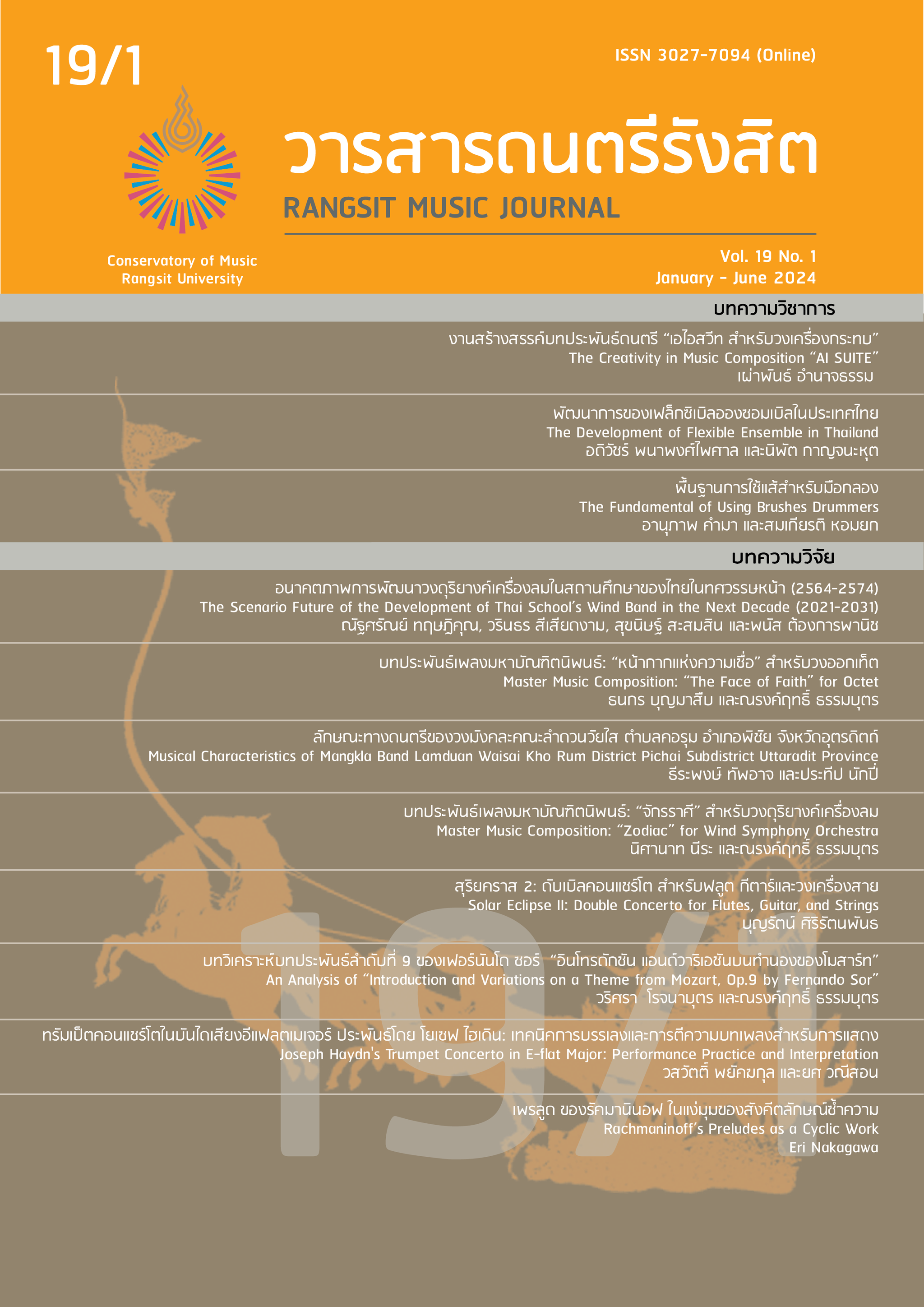Rachmaninoff’s Preludes as a Cyclic Work
DOI:
https://doi.org/10.59796/rmj.V19N1.2024.R0811Keywords:
Rachmaninoff, 24 Preludes, Cyclic CompositionAbstract
For over 18 years during the period 1892 to 1910, Sergei Rachmaninoff composed thePrelude, Op. 3, No. 2; 10 Preludes, Op. 23; and 13 Preludes, Op. 32. The key organization of Rachmaninoff’s 24 Preludes seems random at first glance, not based on any systematic order, as are the sets of Johann Sebastian Bach’s The Well-Tempered Clavier and Frédéric Chopin’s 24 Preludes, Op. 28. However, they consist of all the different major and minor keys and are uniquely integrated by cyclic manipulation of tonal relationships and thematic ideas. While they share numerous features, such as the use of common tones/chords, stepwise motion, chromatic lines, intervallic motives, and a certain rhythmic pattern, they also present divergent elements, such as bold key changes, irregular inclusion of relative- and parallel-key relationship, and effective contrasts in various aspects in many of consecutive preludes. The set of Rachmaninoff’s 24 Preludes is organized in his own unique, original, and meaningful system and conceptual design, which the author believes is highly successful as an integral, cyclic composition.
References
Harrison, Max. Rachmaninoff: Life, Works, Recordings. New York: Continuum, 2005.
Rachmaninoff, Sergei. Complete Works for Piano, Volume 3: 24 Préludes Op. 3, No. 2, Op. 23, Op. 32 (SR 58). Edited by Valentin Antipov. Moscow: Russian Music Publishing, 2017.
Rachmaninow, Sergei. 24 Préludes. Munich: G. Henle Verlag, 2014.
Roh, Yoon-Wha. “A Comparative Study of the Twenty-Four Preludes of Alexander Scriabin and Sergei Rachmaninoff.” DM diss., Indiana University, 2015.
Tsuchida, Sadakatsu. “Originality and Directionality on ’24 Preludes’ of S. V. Rachmaninoff: A Meaning of the Reappearing Main theme.” Research Reports of Shokei Gakuin College, No. 67 (2014): 25–39. Accessed March 16, 2022. https://core.ac.uk/download/pdf/290526964.pdf.
Young, Jonathan. “Rachmaninoff’s ‘Concealed Variation’ Principle: Inspiration for MotivicUnity in His Preludes, Op. 32.” DM diss., University of Kansas, 2019. Accessed March 16, 2022. https://kuscholarworks.ku.edu/bitstream/handle/1808/29597/Young_ku_ 0099D_16537_DATA_1.pdf?sequence=1&isAllowed=y.
Downloads
Published
How to Cite
Issue
Section
License
Copyright (c) 2024 Rangsit Music Journal

This work is licensed under a Creative Commons Attribution-NonCommercial-NoDerivatives 4.0 International License.







